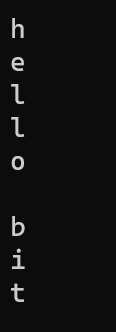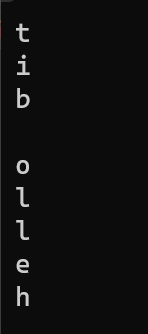标准库中的string类
注意:
1. string是表示字符串的字符串类
2. 该类的接口与常规容器的接口基本相同,再添加了一些专门用来操作string的常规操作。 比特就业课
3. string在底层实际是:basic_string模板类的别名,typedef basic_string string;
4. 不能操作多字节或者变长字符的序列。 在使用string类时,必须包含#include头文件(#include<string>)以及using namespace std;
a. string类对象的常见构造

代码举例1
#include <iostream>
#include<string>
using namespace std;
int main()
{string t1; // 相当于类对象的实例化
}代码举例2
#include <iostream>
#include<string>
using namespace std;
int main()
{string t1("hello world"); // 调用构造函数cout << t1 << endl;string t2 = "hello world"; //隐式类型转换(构造函数 + 拷贝构造 + 优化 -> 构造函数)cout << t2 << endl;
}代码举例3
#include <iostream>
#include<string>
using namespace std;
int main()
{string t1(10, 'a'); // 拷贝 10 个 acout << t1 << endl;
}运行结果:

代码举例4
#include <iostream>
#include<string>
using namespace std;
int main()
{string t1("hello");string t2(t1); // 拷贝构造cout << t2 << endl;
}b. string类对象的容量操作
- size (返回字符串有效字符长度,没有 '\0 ')
代码举例1
#include <iostream>
#include<string>
using namespace std;
int main()
{string t1 = "hello";cout << t1.size() << endl;
}运行结果:

- capacity (返回字符串的总空间大小)
代码举例2
#include <iostream>
#include<string>
using namespace std;
int main()
{string t1 = "hello";cout << t1.capacity() << endl;
}运行结果:

分析:
string 类里面的成员变量有两个可以存储空间,一个是数组,另一个是动态开辟的空间,当数组空间不足时,才会用动态开辟
- reserve(扩大字符串容量,字符有效长度不变:即 size 不变)
代码举例3
#include <iostream>
using namespace std;
int main()
{string t1 = "hello";cout << "有效长度:" << t1.size() << " 总容量:" << t1.capacity() << endl;t1.reserve(100);cout << "有效长度:" << t1.size() << " 总容量:" << t1.capacity() << endl;
}运行结果:

分析:
有些编译器在分配空间的时候,可能会对于开辟所需的空间再给大一点
- resize (将有效字符的个数该成n个,多出的空间用字符c填充)
代码举例4
#include <iostream>
using namespace std;
int main()
{string t1 = "hello";cout << "有效长度:" << t1.size() << " 总容量:" << t1.capacity() << endl;t1.resize(100);cout << "有效长度:" << t1.size() << " 总容量:" << t1.capacity() << endl;t1.resize(10); //可以缩小有效长度,但总容量不会随意变动cout << "有效长度:" << t1.size() << " 总容量:" << t1.capacity() << endl;t1.resize(20, '*'); //对于的空间可以初始化任意字符cout << t1 << endl;
}运行结果:

c. string类对象的访问及遍历操作
- operator[] (返回pos位置的字符,和 C 语言的用法一样,const string类对象调用)
- begin + end (begin获取一个字符的迭代器 + end获取最后一个字符下一个位置的迭代器)
代码举例1
#include <iostream>
using namespace std;
int main()
{string t1 = "hello bit";string::iterator it = t1.begin();// it 相当于拿到 首元素的地址了while (it != t1.end()){cout << *it << endl;it++;}
}运行结果:

分析:

- rbegin + rend (rbegin获取最后一个字符的迭代器 + rend获取第一个字符前一个位置的迭代器)
代码举例2
#include <iostream>
using namespace std;
int main()
{string t1 = "hello bit";string::reverse_iterator rit = t1.rbegin();// it 相当于拿到 首元素的地址了while (rit != t1.rend()){cout << *rit << endl;rit++;}
}运行结果:

分析:

- 范围for
代码举例3
#include <iostream>
using namespace std;
int main()
{string t1 = "hello bit";for (auto i : t1){cout << i;}cout << endl;for (int i = 0; i < t1.size(); i++){cout << t1[i];}
}运行结果:


)


![[LeetBook]【学习日记】类链表反转——寻找倒数第cnt个元素](http://pic.xiahunao.cn/[LeetBook]【学习日记】类链表反转——寻找倒数第cnt个元素)


)








)


